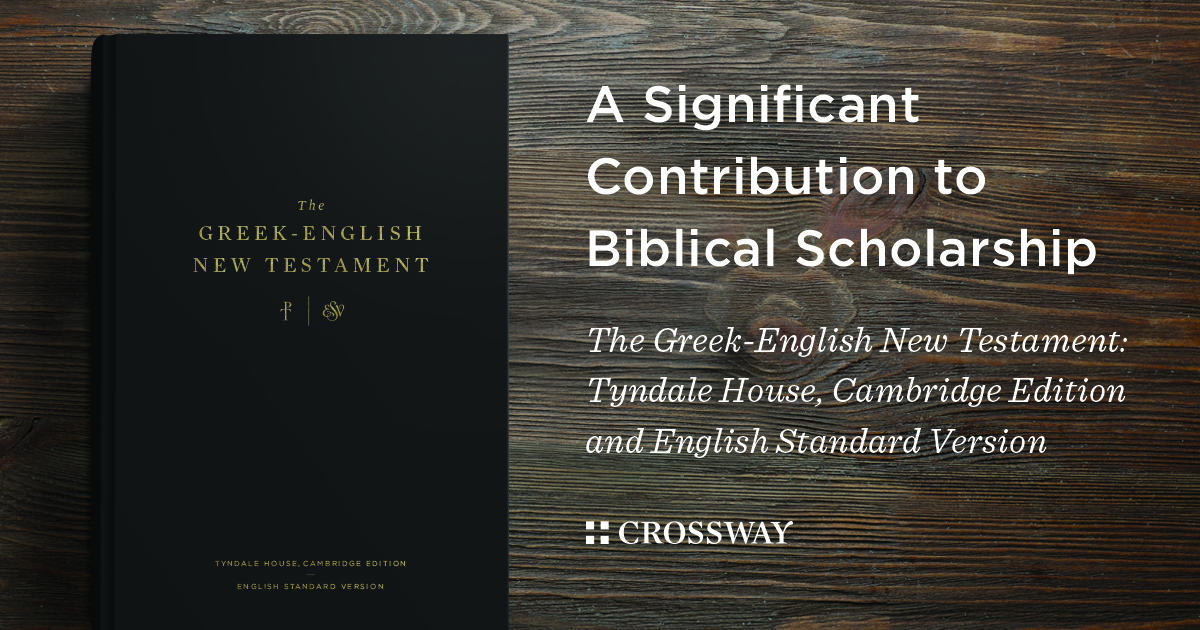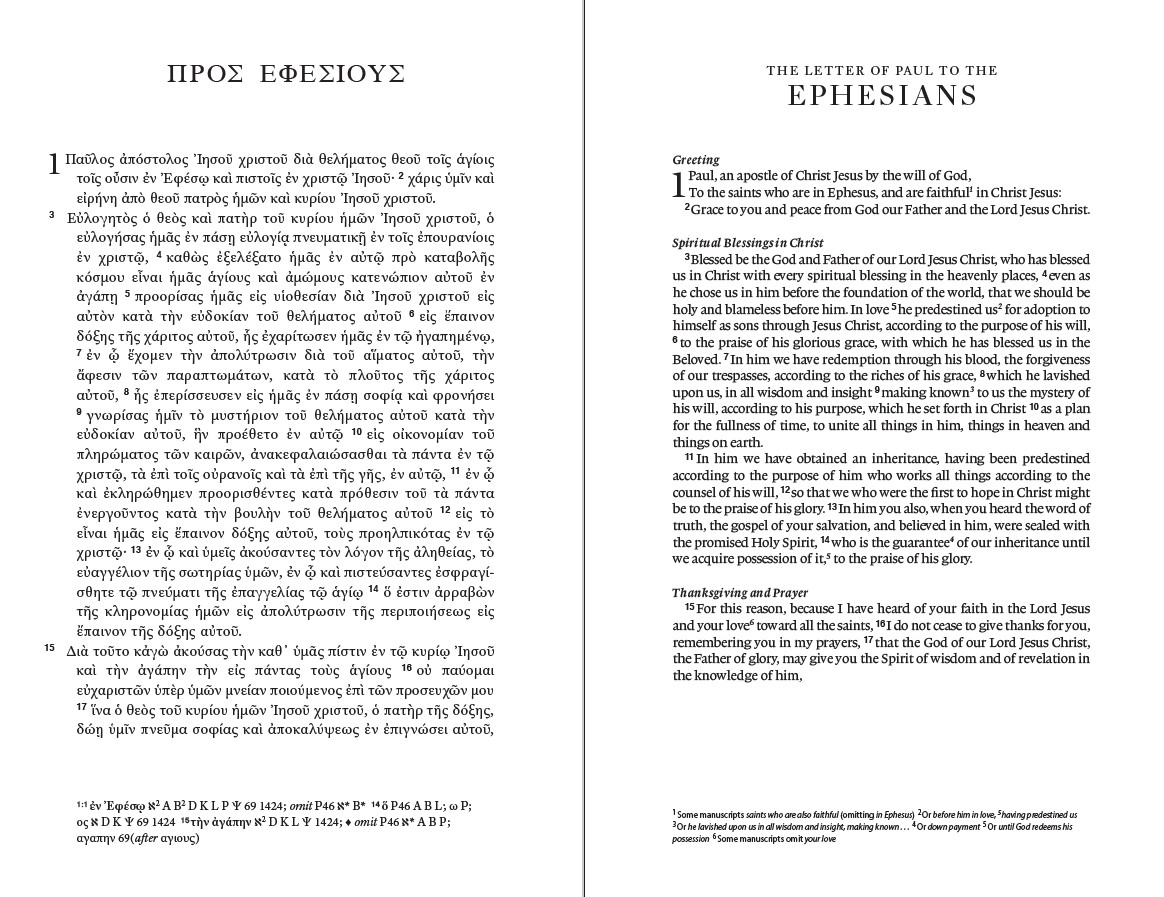
There are three types of Greek and Hebrew Bibles you can buy, and each kind must be used differently to improve your languages. These types include 1) Bibles with only Greek or Hebrew text; 2) Reader’s Editions, which provide glosses for all but the most common words; and 3) parallel Bibles, i.e., those with Greek or Hebrew on one page and an English translation on the opposing page. (We will ignore interlinears since they are unhelpful.)
While I’ve used all three types of Bible for improving my languages, I’ve found parallel Bibles to be the most helpful. I want to explain why, and then give some tips on how to get the most out of your parallel Bible for improving your biblical languages.

Why Do I Prefer Parallel Bibles?
- While Reader’s Editions have glosses for vocab, a parallel comes close to this feature with the English translation on the opposing page. Usually I have a guess at what an unknown lexeme will mean because of the context. I can then look at the English translation and extrapolate other words within the semantic field, thus generating my own Reader’s Edition footnote in my head. If I really need to confirm my inferences, I can look up the word in BDAG or mark it for memorization later.
- I can take it to church and have both available. I can focus on the English version during the reading of the Scripture and most of the sermon, but I can also spot-check in the original language. This extra exposure to the language gives me some valuable practice and also allows me the opportunity to mark up the Greek for study later if anything seems interesting or pertinent to study further.
- I can have a version with my preferred English translation. This happens to be true because I use the ESV, and there are now two parallel editions available with the ESV: the NA28-ESV and the THGNT-ESV. I much prefer the THGNT-ESV for reasons I’ve listed previously. I have used the NA27-RSV for years, but now I can use the THGNT-ESV, which is crucial because I memorize from the ESV. Now using my parallel Greek-English text allows me to reinforce my English memorization.
- I get help with syntax, which is one of the glaring “cons” of the other two types of Bible. They cannot help you sort out difficult syntax, but an English translation can, or it can at least give you a hint in the right direction.
- They give me exposure to translation philosophies. It is helpful for me to think through better and worse translation philosophies and practices as I consistently evaluate the translation choices of the ESV committee. Behind each of the significant choices is a rationale.
How to Use Your Parallel to Improve Your Languages
Let me focus on the THGNT-ESV now, which I’ve been using for the past few weeks since I obtained a copy, thanks to Crossway.
- In your NT devotional reading, start reading it in Greek. Puzzle over lexemes and difficult syntax, but not for too long because this is your devotional reading, not your exegesis seminar. Use the ESV for quick help, and mark the construction so you can return to it later and study further what’s going on or what new vocabulary you need to memorize.
- When you become weary of the Greek, switch pages! Just start reading from the English. This is, in my opinion, the greatest feature of a parallel Bible. You can use it in your devotional time without destroying your devotional mood. As soon as it begins to turn into misery, switch to the English and finish the rest of the passage. You then get daily Greek practice without the strain.
- When preparing a sermon, use both languages to study the text. Since you should read a passage multiple times before even cracking a commentary, you have the opportunity to read it in both languages, and in doing so you will be rewarded. Read it first entirely in the Greek if you can, and then in English. Then go back to Greek and see how much quicker you read it. Then go back to English for a slow, methodical, and devotional read. The bonus is that you only need one volume in front of you, with nothing else to distract you.
- Do you have trouble “cheating,” that is, looking over at the translation before you’ve puzzled over difficult syntax or tried to recall rare vocabulary words? No worries, just cover the English translation with a piece of paper. This problem of “cheating” is probably the biggest accusation laid at the feet of parallel Bibles, but the solution is all too simple.
- Read large chunks of the Greek New Testament. Sometimes, even in English we read quickly through paragraphs, inferring the meaning of unknown words and blasting through dense sections without full comprehension. Context helps us fill in the blanks. Why shouldn’t we do the same in Greek? Reader’s Editions will have you bobbing up and down, down and up from the text to the footnotes, leading you along at a snail’s pace. Greek-only editions are less distracting, except for those pesky apparatuses, marginal notes, innumerable in-text symbols, and allusion/quotation notations. The THGNT-ESV, as you can see below, is very clean and not distracting, allowing you to read through large chunks of Greek in one sitting. If you don’t know a word or how to translate a phrase, glance at the English quickly and get right back to the Greek. In this way, you will work through large chunks of language the same way you do with English texts, better approximating your new language acquisition experience to your initial one.
So Get a Parallel Bible!
There are many benefits to a parallel Bible, and that’s why I prefer to spend most of my Greek and Hebrew reading time in one. Using the tips above, you can have consistent exposure to and practice in the original languages, which will enable you to keep up and even improve your biblical languages without much effort.
For a Greek-English parallel, I recommend the THGNT-ESV for reasons I’ve laid out elsewhere. It’s the parallel Bible I’ll be using for a long time.
Buy it on Crossway’s website or on Amazon.



